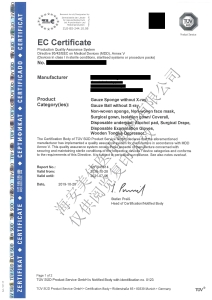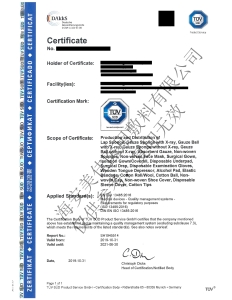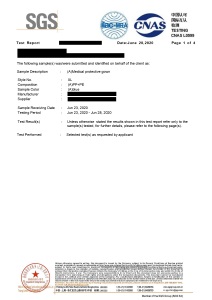Protective gowns EN 29073-3: 1992 Disposable isolation gowns EN 13795-1: 2019 ✓ Waterproof isolation gowns Disposable protective gowns care purchase ✓ Laboratory coats ✓ Nursing gowns ✓ Disposable gowns ✓
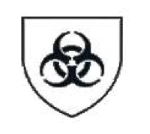 Infektionsschutzkittel logo Infektionsschutzkittel logo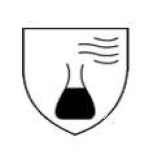 logo_Kittel logo_Kittel
|
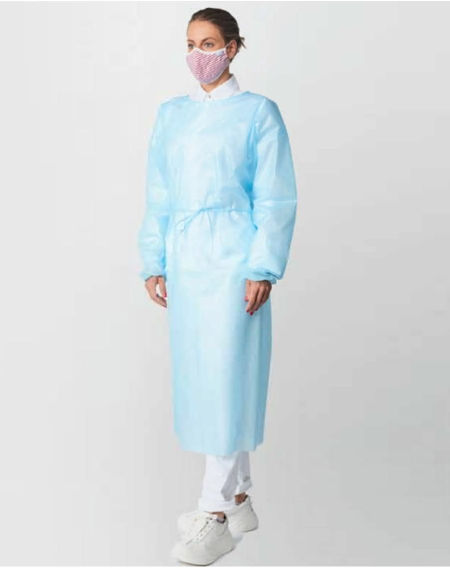 Protective Gown Protective Gown 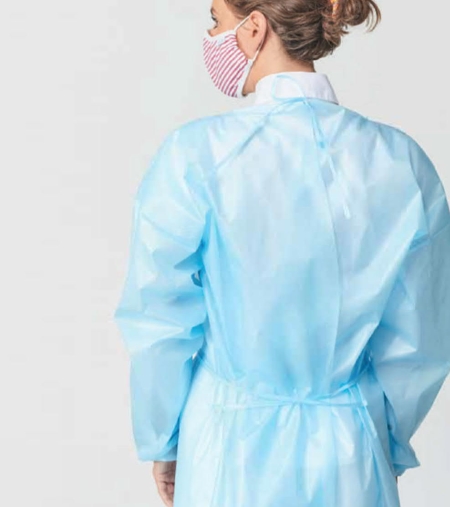 Protective Gown Protective Gown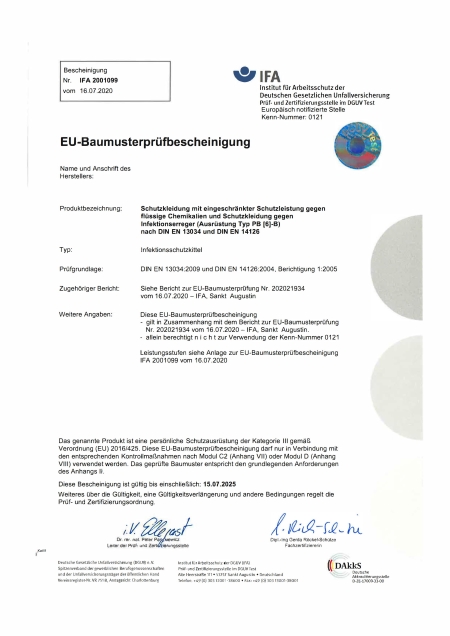 Infektionsschutzkittel EN14126 Infektionsschutzkittel EN14126 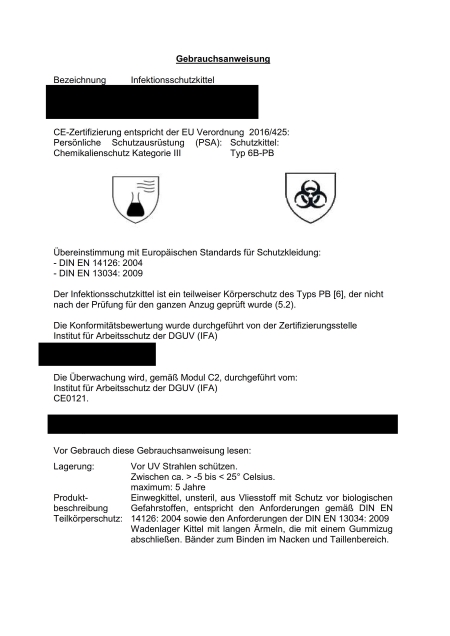 Schutzkittel Schutzkittel |
|||||||||||||||||||||||||||||||||||||
Test procedure |
|
|
Instructions for use |
|
Designation infection protection gown CE certification corresponds to EU regulation 2016/425: Personal protective equipment (PPE): chemical protection category III protective gown: type 6B-PB in accordance with European standards for protective clothing: - DIN EN 14126: 2004 - DIN EN 13034: 2009 The infection protection gown is a partial body protection of type PB , which has not been tested for the entire suit after the test (5.2). The conformity assessment was carried out by the certification body Institute for Occupational Safety and Health of the DGUV (IFA). Module C2, carried out by: Institute for Occupational Safety and Health of DGUV (IFA) CE0121. Read these instructions for use before use: Storage: Protect from UV rays. Between approx > -5 to < 25 ° Celsius. maximum: 5 years disposable gown, non-sterile, made of non-woven fabric with protection against biological hazardous substances, corresponds to the requirements according to DIN EN 14126: 2004 as well as the requirements of DIN EN 13034: 2009 Calf bearing smock with long sleeves that end with an elastic band. Ribbons to tie in the neck and waist area. Material 100% polypropylene - Spunbond With liquid impermeable LDPE (Low Density Polyethylene) coating Color blue Cuffs elastic band Size chart Size table Waist / Hips Length 140 cm M 135 cm 127 cm XL 150 cm 127 cm Area of application: The protective gown is designed to protect parts of the body that are exposed to hazards. The wearer of the gown should be protected from dangerous substances and personal contamination. The gown can be used in combination with other personal protective equipment. (The wearer is responsible for ensuring that it is correctly combined with other equipment.). It is the responsibility of the wearer to estimate the maximum wearing time for the tasks to be carried out, taking into account the protective effect and wearing comfort. |
Production time approx. 12 days, depending on the quantity, Delivery times Germany approx. 6 - 8 days, Austria + Switzerland approx. 12-14 days from the date of payment. |
 Protective Gown Protective Gown 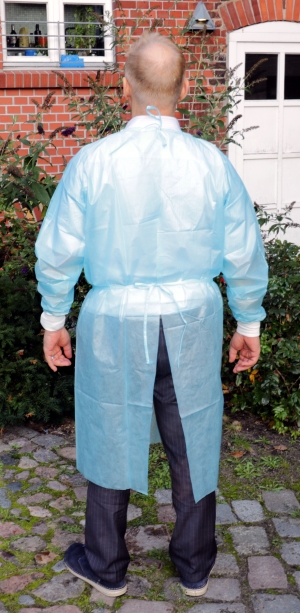 Protective Gown Protective Gown 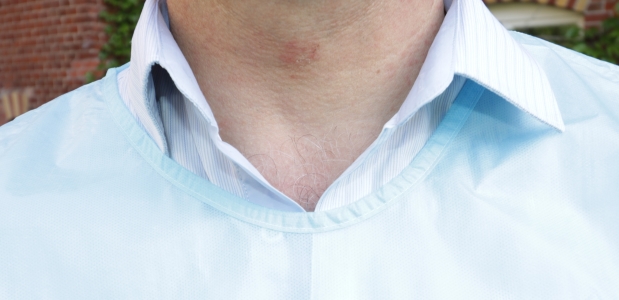 Protective Gown Protective Gown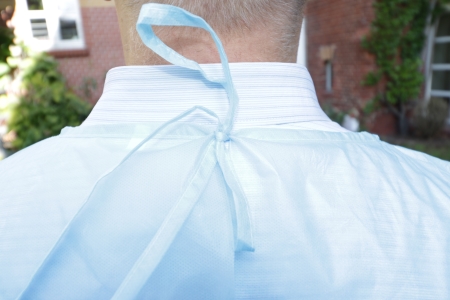 Protective Gown Protective Gown 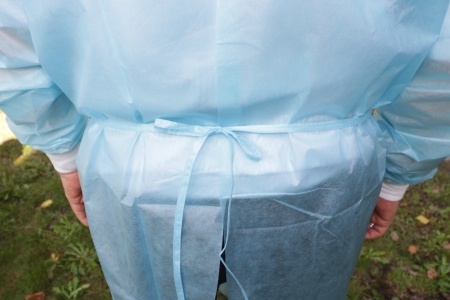 Protective Gown Protective Gown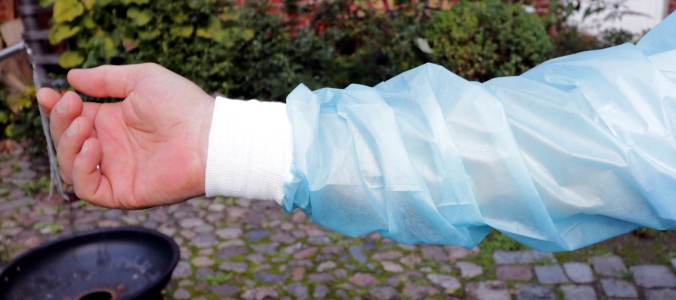 Protective Gown Protective Gown |
|||||||||||||||||||||||||||||||||||||||
|
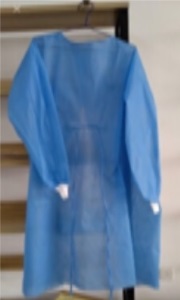 Protective Gown Protective Gown |
General information:
Comparison of medical protective clothing
Standards
The result of the comparison between China's mandatory national standard GB 19082-2009 for technical disposable protective clothing for medical purposes and the EU standard (EN 14126) is as follows. This result is summarized by the standards comparison materials prepared by the Standard Management Center for Medical Devices of the China Medical Device Department, the Science and Technology Development Department of the National Association of China Textile Industry, the National Technical Committee for the standardization of personal protective equipment and other relevant parties.
For the area of application:
EN 14126 applies to reusable anti-virus clothing. GB 19082 applies to disposable medical protective clothing used by medical personnel who come into contact with potentially infectious blood, body fluids, secretions and airborne particles to provide a barrier and protection.
For physical properties of substances:
EN 14126 refers to EN 14325, Chemical protective clothing - Chemical protective clothing materials, seams, joints and the test method and properties classification of the components. According to EN 14325, protective clothing must the substance test procedures specified in the standard and the system for classifying the substance performance are tested and classified.
GB 19082 specifies two indices such as elongation at break and breaking strength. Other indices such as wear resistance, flexural strength, flexural strength (-30 ℃) and crack are not specified.
For barrier properties of fabrics:
EN 14126 mainly refers to international standards such as ISO 16603, ISO 16604, ISO 26610, ISO 26611 and ISO 26612. The EU standard defines the classification requirements in five aspects, including antisynthetic blood penetration.
Anti-Blood Pathogens (Phi-X174) Bacteriophage Contaminated Fluid Pressure, Penetration Test, Anti-Wet Microbe Penetration Test, Anti-Microbe Aerosol Test, and Anti-Dry Microbe Test.
GB 19082 mainly specifies the requirements of the water resistance test, the water test, the particle filtration efficiency and the moisture permeability.
For the overall performance of the clothing:
EN 14126 mainly specifies three indicators, namely the overall test of clothing performance, joint strength and skin irritation. The overall performance of the clothing is related to relevant international standards and EU standards such as EN466. They are divided into protective suits against liquid aerosol and solid particles, liquid-tight protective suits (type 3), splash-proof protective suits (type 4), protective suits against solid particles (type 5) and protective suits ; against easy splashing of chemical liquids (type 6).
GB 19082 specifies six indicators including microbial indicator requirements, sterilization requirements, ethylene oxide residues, antistatic properties, electrostatic attenuation, and skin irritation.
Comparison of the most important technical requirements from EN 14126: 2003 and GB 19082-2009
|
Standard number |
GB 19082-2009 |
EN 14126: 2003 |
|||
|
Standard name |
Technical requirement for disposable protective clothing for medical purposes |
Protective clothing - Antivirus clothing performance, requirements and testing methods |
|||
| Umfang |
The standard standardizes the requirements for Disposable protective clothing for medical purposes. This standard applies to medical disposable protective clothing for medical personnel who come into contact with potentially infectious blood, body fluids, secretions and particles from the air, provide a barrier and protection. |
The standard standardizes the requirements and test methods for reusable, limited-use anti-virus protective clothing. The standard does not apply to protective clothing worn by first-class surgical personnel or to surgical instructions that are placed on the patient's body to prevent cross-contamination during the surgical procedure. |
|||
|
Technical terms |
Index requirements |
Test Methods |
Index requirements |
Test Methods |
|
|
Physical properties of the fabric |
Abrasion resistance |
None |
|
Mechanical and flammability requirements: The materials are in accordance with to review and classify the testing methods and performance classification system that are required according to; are standardized in accordance with the relevant provisions of Pr EN 14325. |
|
|
Bending resistance |
None |
|
|||
|
Bending resistance at - 30 ℃ (optional) |
None |
|
|||
|
Tear strength |
None |
|
|||
|
Stretching during the break |
Key parts should not be less than 15% |
GB / T 3923.1-1997 |
|||
|
Breaking strength |
Key parts should not be smaller than 45N |
GB / T 3923.1-1997 |
|||
|
Barrier fabric test |
Impermeability |
The hydrostatic pressure of the key parts should be ≥ its 1.67 kpa |
GB / T 4744-1997 |
None |
|
|
Water test |
≥ Level 3 |
GBT 4745-1997 |
None |
||
|
Efficiency of particle filtration |
Nacl's filtration efficiency on critical parts and connections should not be less than 70% |
Article 5.7 of GB 19082-2009 |
None |
||
|
Moisture transfer |
≥ 2500 g / (m 2 · D)
|
Method A of GB / T 12704-1991 |
None |
||
|
Resistance to Synthetic Blood Penetration |
Level 1 (0 kPa) Level 2 (1,75 kPa) Level 3 (3,5 kPa) Level 4 (7 kPa) Level 5 (14 kPa) Level 6 (20 kPa) Should not be ≤ level 2 |
Appendix A to GB 19082-2009 |
Level 1 (0 kPa) Level 2 (1.75 kPa) Level 3 (3.5 kPa) Level 4 (7 kPa) Level 5 (14 kPa) Level 6 (20 kPa) Classification according to actual test results. |
ISO 16603 |
|
|
Pressure penetration test of contaminated liquid against blood-borne pathogens (Phi-x174) |
None |
|
Level 1 (0 kPa) Level 2 (1,75 kPa) Level 3 (3,5 kPa) Level 4 (7 kPa) Level 5 (14 kPa) Level 6 (20 kPa) Classification according to actual test results.. |
ISO 16604 |
|
|
Resistance to ingress of moisture microbes |
None |
|
Level 1 (≤15min) Level 2 (15 <t ≤ 30 min) Level 3 (30 <t ≤ 45 min) Level 4 (45 <t ≤ 60 min) |
ISO 26610 |
|
|
|
|
|
|
Level 5 (60 <t ≤ 75 min) Level 6 (t> 75 min) T is the breakthrough time |
|
|
Antimicrobial aerosol test |
Keiner |
|
Level 1 (1 <log ≤ 3) Level 2 (3 <log ≤ 5) Stufe 3 (log> 5) Log ist Penetration |
ISO 26611 |
|
|
Anti-dry microbe test |
Keiner |
|
Level 1 (2 <log cfu ≤3) Level 2 (1 <log cfu ≤2) Level 3 (log cfu ≤1) Log cfu is the penetration index |
ISO 26612 |
|
|
Overall clothing |
Overall clothing performance test |
Keiner |
|
Specific requirements refer to other EN standards: — — Type 1 EN 943-1 (EN943-2 for "airtight" chemical protective clothing of the emergency team (ET)) —— Type 3 EN 466 —— Type 4 EN 465 —— Type 5 ISO 13982-1 —— Type 6 EN 13034 —— Teilkörperschutz EN 467 |
|
|
Seam thickness |
Keiner |
|
EN 14325 |
||
|
Microbiological index requirements |
There are requirements for bacterial colony detection |
Appendix B to GB 15979-2002 |
None |
||
|
Sterilization requirements |
Sterilized and not sterilized. If sterilized, the word "sterile" must be marked on the packaging |
|
None |
||
|
residual value |
Should not exceed |
Article 5.13 of |
None |
||
|
|
ethylene oxide |
10 μ g / g |
GB19082-2009 |
|
|
|
Skin irritation |
The primary stimulus point should not exceed 1 |
Article 5.11 of GB19082-2009 |
Article 4.3 of EN14126 stipulates that the materials and designs used must not have any skin irritation or health effects. |
||
|
Antistatic properties |
The electrical size of the clothing should not exceed 0.6uC |
Article 7.2 of GB / T 12703-1991 |
None |
||
|
Static decay |
The static cooldown time of the protective clothing should not exceed 0.5s. |
Article 5.10 of GB19082-2009 |
None |
||
Note: The comparison provided is only technical information based on a text comparison and cannot be used as a legal basis for the foreign party to select Chinese products.
Contents: Protective gown EN 29073-3: 1992 Disposable isolation gown EN 13795-1: 2019 ✓ Buy waterproof isolation gown Disposable protective gown care ✓ Laboratory coats ✓ Nursing gowns ✓ Disposable gowns ✓

